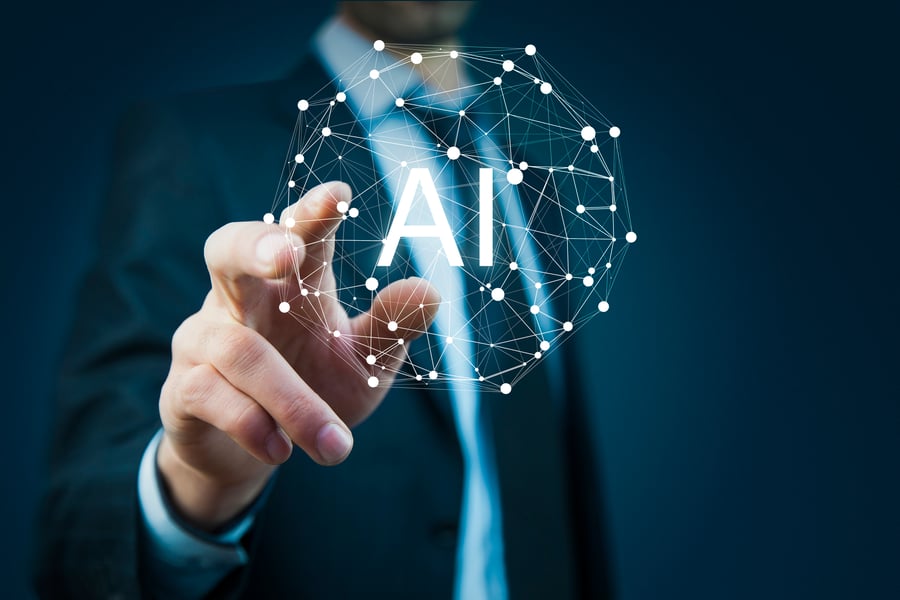
Automated MLOps: The Key to Unlocking Scalable AI
- Continuous Integration and Continuous Delivery (CI/CD) for ML Pipelines: Streamlined, automated workflows ensure consistent, reliable deployments, eliminating manual errors and accelerating time to market.
- Automated Model Training and Experimentation: Experimentation becomes faster and more efficient, allowing for rapid iteration and optimization of models.
- Efficient Model Deployment and Management: Automated deployment processes ensure consistency and scalability, enabling the seamless integration of AI models into production environments.
- Real-time Monitoring and Performance Optimization: Continuous monitoring proactively identifies issues and optimizes performance, ensuring model accuracy and stability.
- Version Control and Governance for Trustworthy AI: Version control and audit trails ensure compliance and traceability, fostering responsible AI development.
These principles, woven together, create a powerful symphony of efficiency and scalability:
- Faster Time to Market: No more waiting for manual interventions. Automated processes deliver models to production quicker, giving you a competitive edge.
- Increased Business Value: Efficiently scaling AI initiatives translate to faster ROI, improved decision-making, and increased business value.
- Reduced Costs and Resource Burden: Automating repetitive tasks frees up valuable resources for more strategic work, leading to cost savings and improved resource utilization.
- Improved Model Performance and Stability: Continuous monitoring and optimization ensure models stay relevant and perform optimally, delivering consistent and reliable results.
The impact of automated MLOps goes beyond just numbers. It fosters a culture of collaboration and data-driven decision-making, where teams work together to improve AI models and their impact on the business continuously.

Scaling AI with Automation: Real-world Examples and Benefits
Consider the case of a leading manufacturer who struggled to scale its predictive maintenance model for factory equipment. Manual processes and data silos hampered their ability to keep the model updated and operational. By implementing automated MLOps solutions, they achieved:
- Reduction in model deployment time
- Improvement in equipment uptime
- Reduction in maintenance costs
These quantifiable results showcase the tangible impact of automated MLOps on business outcomes. Beyond this, organizations across industries are leveraging automation to achieve:
- Faster Time to Market: Delivering AI-powered products and services at an accelerated pace.
- Increased ROI: Maximizing the return on investment in AI initiatives.
- Improved Operational Efficiency: Automating repetitive tasks to free up resources for more strategic work.
- Increased Business Agility: Adapting to changing market demands with greater flexibility.
-2.jpg?width=900&height=601&name=person-using-ai-tool-job%20(1)-2.jpg)
Integrating Automated MLOps: Strategies for Scalable AI Success
Integrating automated MLOps into existing workflows isn't just about technology but cultural transformation. Here are key strategies to ensure smooth adoption and maximize the impact of your AI initiatives:
Start Small and Scale Gradually
- Don't try to automate everything at once. Begin with a pilot project or low-impact use case to gain experience and build momentum.
- Identify repetitive tasks that consume valuable resources and have the biggest potential for automation.
- Gradually expand your automation scope as you build confidence and expertise.
Break Down Silos and Foster Collaboration
- Encourage open communication and collaboration between data scientists, engineers, and operations teams.
- Create cross-functional teams responsible for the entire AI lifecycle, from data ingestion to deployment.
- Utilize shared platforms and tools to promote transparency and collaboration.

Standardize and Document Everything
- Establish clear guidelines and best practices for data preparation, model training, deployment, and monitoring.
- Document code, workflows, and configurations thoroughly for future reference and knowledge sharing.
- Leverage version control systems to track changes and ensure consistency across environments.
Choose the Right Tools and Technologies
- Evaluate different MLOps platforms and tools based on your specific needs, budget, and infrastructure.
- Consider factors like scalability, ease of use, integration with existing systems, and support for your chosen cloud platform.
- Be open to exploring open-source solutions and customizing them to fit your unique requirements.
Invest in Training and Upskilling
- Equip your teams with the necessary skills to utilize and maintain automated MLOps tools and workflows.
- Provide training on MLOps principles, best practices, and specific tool functionalities.
- Encourage continuous learning and adaptation to stay ahead of the evolving AI landscape.

Monitor, Measure, and Optimize
- Continuously monitor the performance of your automated MLOps pipelines and deployed models.
- Identify bottlenecks, inefficiencies, and areas for improvement.
- Use data-driven insights to optimize workflows, adjust parameters, and improve model performance over time.
Governance and Security
- Implement access controls and audit trails to ensure data security and compliance with regulations.
- Establish clear guidelines for model deployment, monitoring, and responsible AI development.
- Regularly review and update your governance policies as your AI initiatives evolve.
By implementing these strategies, you can successfully integrate automated MLOps into your existing workflows, unlock the true potential of your AI initiatives, and achieve sustainable success in the age of intelligent machines.

Conclusion
The future of AI is not just intelligent; it's scalable, sustainable, and accessible to businesses of all sizes. Automated MLOps stands as the gateway to this future, unlocking the true potential of AI and transforming industries across the board. Embrace automated MLOps today and empower your business to thrive in the age of intelligent machines. Remember, the AI landscape is constantly evolving. Stay adaptable, embrace new technologies as they emerge, and ensure your continued success in this exciting and transformative field. If you want to leverage automated MLOps in scaling AI, then let’s have a chat.


